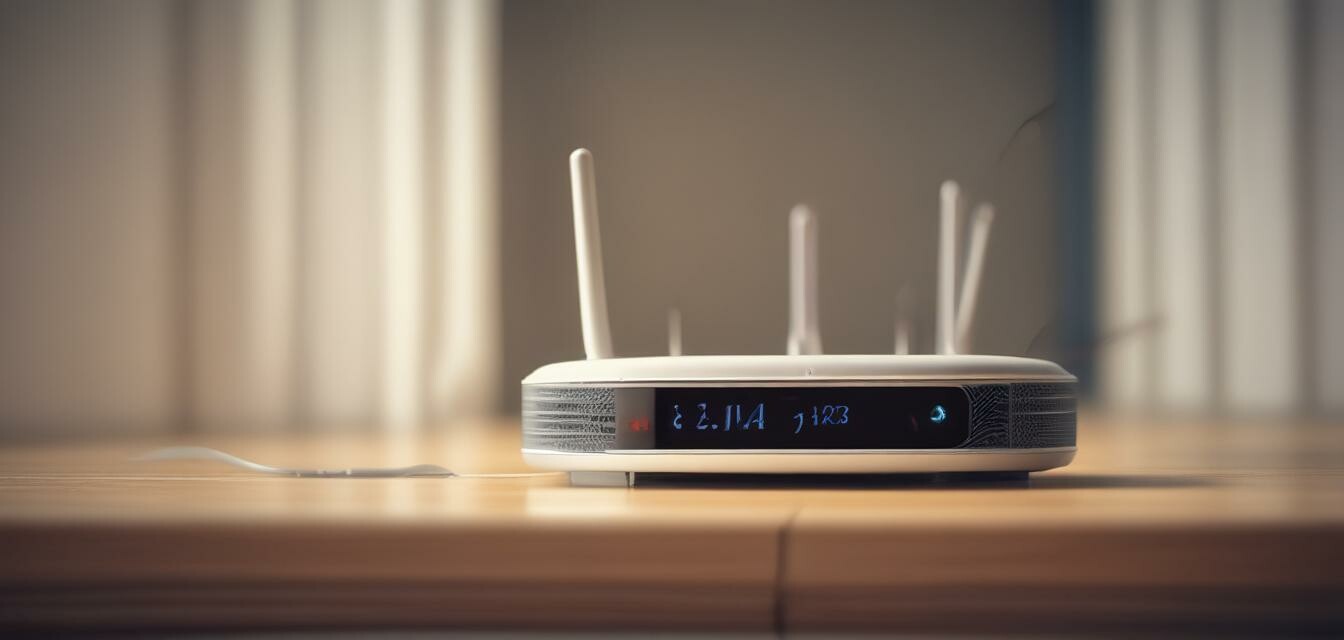
How to Properly Place Your Router for Maximum Performance
- Router placement significantly affects internet speed and performance.
- Position your router higher up and in the center of your home for optimal coverage.
- Keep your router away from interference sources like microwaves and walls.
- Regularly check for firmware updates to improve functionality.
- Consider using Wi-Fi extenders if your home has dead zones.
In today's fast-paced world, reliable internet is not just a luxury but a necessity. Many people find themselves frustrated with slow speeds, buffering videos, and dropped connections. Often, the culprit of these problems lies not in your Internet Service Provider, but in the placement of your router. Understanding how to position your router can lead to significant improvements in your internet performance. This guide outlines tips for optimizing your router placement for the best possible internet experience.
The Importance of Router Placement
The placement of your router affects both the speed and the range of your Wi-Fi signal. Poor placement can lead to weak connections and dead zones in your home. Here are key considerations for why router placement matters:
- Signal Strength: A well-placed router provides a strong and stable signal.
- Coverage Area: Positioning affects how far your Wi-Fi reaches.
- Interference: Some locations may introduce interference from electronic devices.
Best Practices for Placing Your Router
To achieve maximum internet performance, follow these tips for optimal router placement:
1. Central Location
Place your router in a central area of your home to evenly distribute the Wi-Fi signal. If your router is on one side of the house, guests on the opposite side may struggle to connect.
2. Higher Positioning
Position the router on a shelf or elevated spot to help signals navigate around obstacles. Signals travel better vertically than horizontally.
3. Avoid Obstacles
Keep the router away from thick walls, metal objects, and electronic devices like microwaves that may interfere with the signal.
4. Open Spaces
Try to place your router in an open space rather than inside cabinets or behind furniture to maximize your signal reach.
5. Check for Interference
If you live in a crowded area, consider using a Wi-Fi analyzer tool to identify less crowded channels that may improve performance.
Comparing Different Router Placements
| Placement Option | Signal Strength | Range | Potential Issues |
|---|---|---|---|
| Corner of the home | Poor | Limited | Increased dead zones |
| Center of the home | Excellent | Maximized | Minimal |
| High shelf | Good | Decent | Possibly obstructed by walls |
| Behind a TV or cabinet | Poor | Limited | Interference from other electronics |
Using Wi-Fi Extenders
If you find areas of your home where the signal is weak, consider using Wi-Fi extenders. These devices can boost your signal, expand coverage, and eliminate dead spots. For more information on Wi-Fi extenders, check our guide on Wi-Fi Extenders.
Beginner's Section: Quick Tips for Router Placement
- Upgrade your router for better performance.
- Keep firmware updated for optimal functionality.
- Use dual-band routers for more flexibility in signal strength.
- Regularly test your connection speed to ensure you're getting what you pay for.
Conclusion
By following these guidelines for proper router placement, you can significantly enhance your internet performance and ensure a smooth online experience for everyone in your home. Remember, effective placement promotes stronger connections and less frustration. Regularly check your settings and be proactive about any potential interference in your network. For more tips on maximizing your internet experience, explore our Tips and Tricks category.
Pros
- Improves internet speed and performance.
- Expands Wi-Fi coverage throughout your home.
- Reduces areas with weak signals.
- Simplifies network management.
Cons
- May require initial setup effort.
- Some solutions may require additional devices.
- Results can vary depending on home layout.
